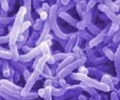
A team of Brown University and Harvard University researchers has discovered that there is indeed more involved in splashing than previously believed, the Newswise reported.
"In recent studies, it was highlighted that the surrounding air plays an important role in the splashing process. Decreasing the ambient pressure inhibits splashing," said Julie Albagnac, a postdoctoral research associate in engineering at Brown.
"The observations led to a hypothesis of the existence of a thin layer of air trapped between the drop and the surface."
To better understand droplet splashing, the researchers initially wanted to observe and measure this layer of trapped air.
They hypothesized that splashing takes place while the drop is still spreading on an air film.
Advertisement
So they instead studied the time evolution and behaviour of droplets splashing with various impact velocities under a variety of ambient pressures to examine different scenarios involving splashing.
Advertisement
The splashing/spreading of a droplet doesn't seem to be an on/off situation, according to the team.
A transition regime exists between the spreading and splashing, which they observed by changing either the impact velocity or the ambient pressure while the other is fixed.
Source-ANI









